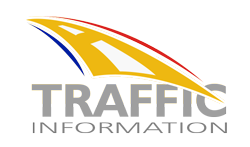Is it time to redesign organised learning?
The COVID-19 pandemic has “micro-waved” the transition to an impermanent workforce, a gig economy where the remote workforce is now a far greater percentage than ever envisioned before. That switch happened as quickly as it took for the coronavirus to replicate itself to become a global threat to human health. The switch to remote working, remote learning, remote teaching, remote socialising, remote shopping, in fact almost remote everything, happened in a heartbeat. We have moved to a low-touch economy!
In order to seize the new opportunities that our changed environment presents for both individuals as well as organisations, both will need to reconsider their approach to learning. Building new skills and being able to apply these quickly and effectively is essential to survival. What is clear is that we don’t have the luxury of thousands of evolutionary years to adjust to our changed circumstances. The changes to our current environment have been abrupt, decisive and severe – a case of Darwinian adaptation on steroids.
Already, education and training providers and HR leaders are analysing the challenges that the pandemic presents to organisational learning, and how to reorganise the way that learning and development interventions are delivered. These are some of the key factors that need reflection in our new normal:
Superficial vs Extensive: Some subjects may require a high level of understanding, while others may require deep immersion for learning and application to take place. Learning strategies and interventions will require some critical thinking around this aspect – for example where and how does technology-enabled learning and “nano sessions” fit in and when would it be appropriate? What are the learning goals? Some topics may require a build-up or progression, going from a basic and introductory level and then advancing to expert level with time or role transition.
How will your organisational learning strategy cater to this aspect? If one considers the ‘KNOW-DO-BE’ framework, and if a new skill requires both ‘knowledge’ and ‘doing’, how will the learning content and delivery mechanism be structured? Some of the generic, open enrolment courses may no longer be appropriate in this changed environment.
Developing Knowledge versus Developing Skills: Technology and non-customised or even semi-customised content has its place in developing an understanding and basic (foundational) knowledge of certain topics. Research has shown that social media learning and access to web-based information can sometimes be more of a distraction and take away from “deep work”. Individuals and Corporates need to understand that:
Awareness, Understanding, Knowledge and ultimately insights and skilled application of this is a process. Knowing how to build a process that enables this is critical, or else the effort on knowledge creation through learning is wasted.
Learning design and delivery principles are different for skills building and knowledge acquisition. Learning design and facilitation processes – whether tech-based or person-based – need a different approach when skill-building is required.
Access to learning through technology platforms: Technology can facilitate broader access to learning, however on their own, learning technology platforms do not accelerate learning. To enable effective learning, technology must be part of a more systemic learning eco-system that includes things such as: reward (the “what’s in it for me”), building blocks from one intervention to the next and post-learning support.
What vs How of learning: Given the pandemic, the focus has been on a push to re-start learning and not allow learning stall. However, the focus has been on the “how” – technology access and solutions, communication platforms, and so on. While the intent may be good, the focus needs to be on the “what” of learning in addition to the ‘how’.
What do you as an individual need to learn? Learning activities must be linked to business and personal objectives and outcomes. What are the most critical skills one needs to learn? Simply having platforms and vast amounts of available content is misleading and deceptive. It is a lot like having many adverts on web pages which take us to different paths through constant clicking behaviour. We end up losing sight of the original objective of what we were looking for and get side-tracked.
Organisations will potentially need to think about three layers of learning content and access methods:
thoughtfully curated by the organisation for business fit,
semi-curated with the learner having some control of what they learn and,
open for all, where the learner makes all the choices of what and how they learn.
Employee-centric Learning Approach – this is important within a well-built framework. There must be a match of learning to organisational objectives as well. Non-curated, open content on platforms is great for focused and deeply aware employees but may not work for everyone, especially in cultures where self-direction is not very strong. Moreover, too much open, non-curated content, driven by non-contextual algorithms is as detrimental to choice-making for the learner as is too little quality content
Generalised offerings vs Customised ones: Making generic platforms and content available helps get to a base level of knowledge and awareness for employees and managers, but it does not necessarily provide enough depth for creating differentiated impact in a role. It also does not help in career-building or moving ahead with building deep and relevant skills for the future.
Informal and Social Learning: Learning can happen anytime, anywhere with those around us serving as sources of inspiration, knowledge and experience. Social learning takes place through observation or instruction in a social environment. Informal learning is a more impromptu form of learning. It usually happens “on the fly” and is often the unforeseen side effect of normal everyday activities. Organisations must leverage the opportunities of learning from different types of communities. – peers, external networks, professional and academic bodies and so on. Does the design and delivery of the learning intervention leverage communities that can accelerate learning? There are huge possibilities of learning from different types of communities for all. Are we missing out on the intangible benefits of communities in our learning focus by overinvesting in other aspects?
The current or traditional ways of organising work and learning have been dramatically redefined by the pandemic. So too have the requirements of skills and mindsets. It is time to reimagine and reboot our approaches to organisational learning from the models, to delivery and technology, to provide learning solutions with impact for people and business. In the words of Winston Churchill, ‘never let a crisis go to waste’ – for those able to find the opportunities in our pandemic crisis, an innovative new world of work and learning awaits for those who are resilient enough to embrace it, adapt and thrive.



























